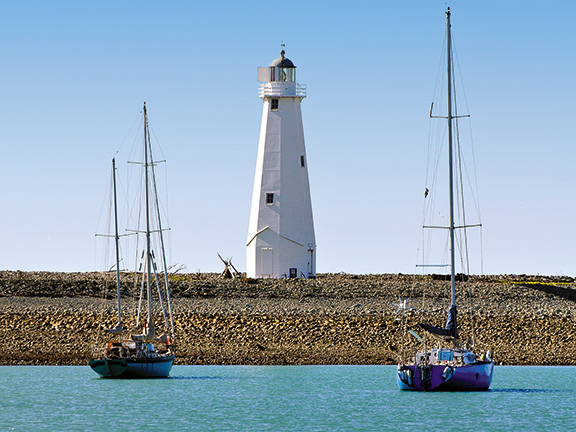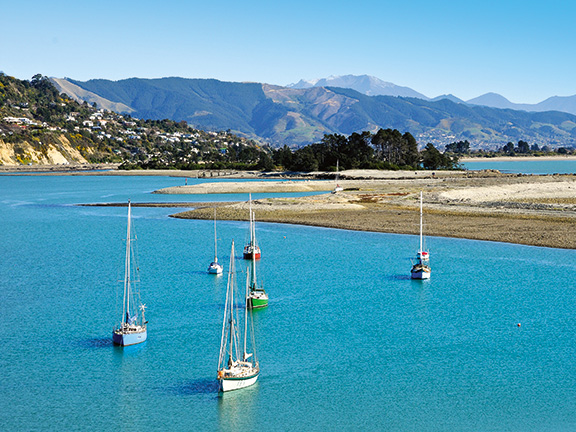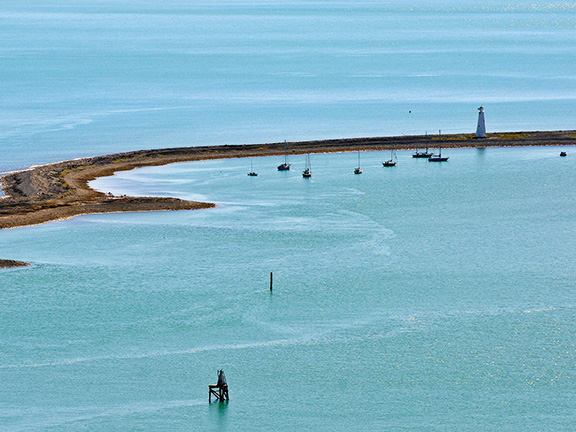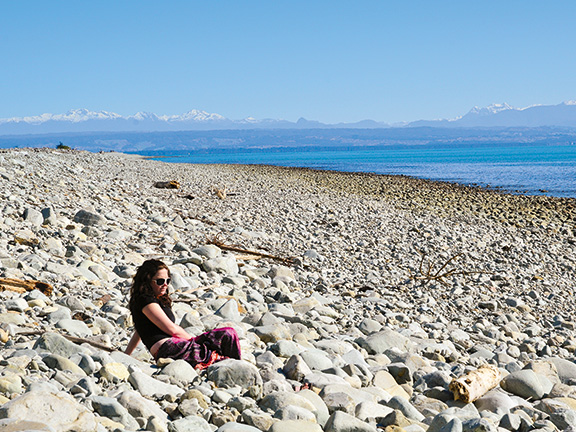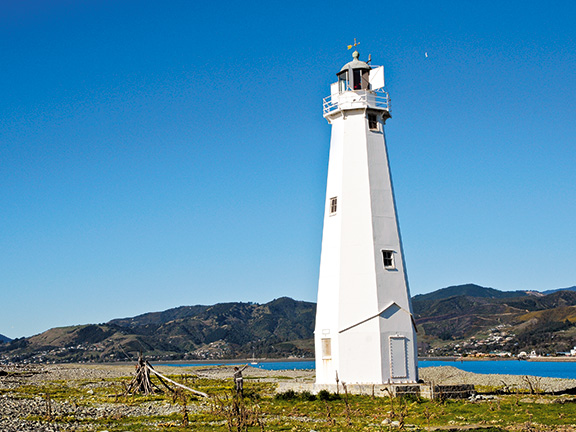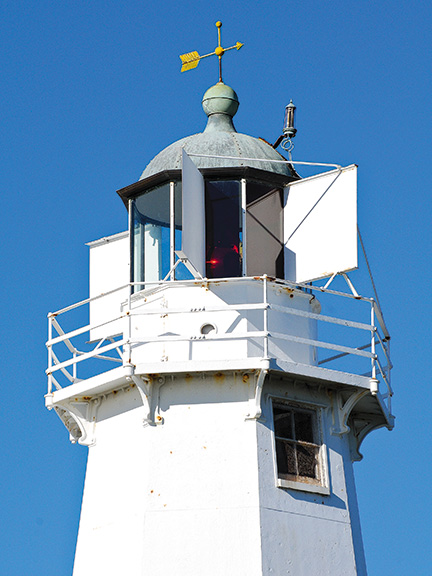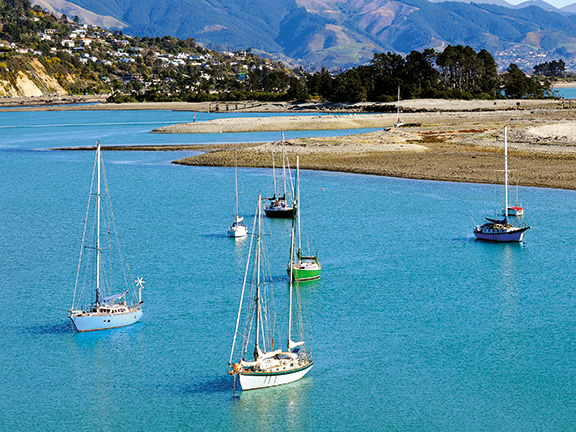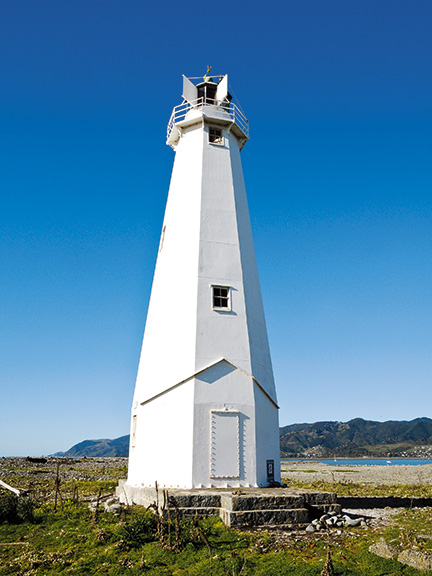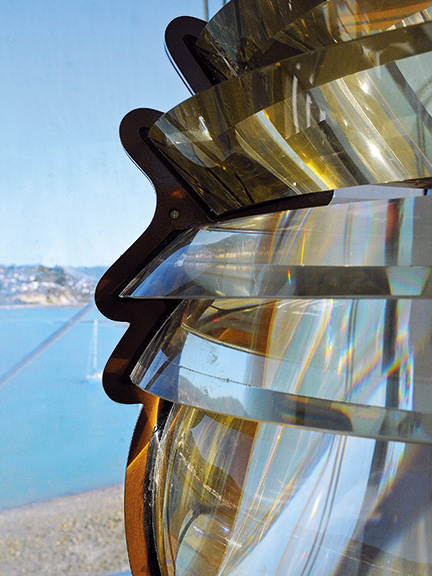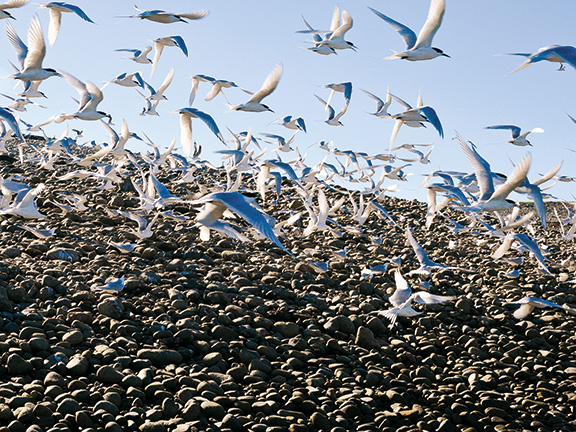As I fly into Nelson on a blue-sky day, I see Boulder Bank below me. It's a long, thin thread of grey stones, slicing the sea in two. On one side of it, the sea is sapphire blue and corrugated by ocean breeze and on the Nelson side, it's green and smooth.
Boulder Bank is a 13km bank of boulders stretching in an elegant arc from Glenduan in a southwesterly direction across Tasman Bay to Nelson city and harbour. The harbour, Nelson Haven, is, as the name implies, a sheltered and safe haven tucked behind the bank.
From a hill behind Nelson, I see the Boulder Bank again — it hovers on the water in a surreal way. A lonely lighthouse is a mark of verticality, while six cottages at distant intervals end with a big dot of an island as a neat punctuation mark.
Not only is Boulder Bank an awe-inspiring geological feature, but it's also the largest of any similar landform in the world. It's a three-hour stumbly walk over stones from land's end to the sea end, so I take the easy way — a harbour and lighthouse cruise with Sailing Charters.
The history of Boulder Bank
Skipper Martin Holmes explains the New Zealand Company began the settlement of Nelson in 1842 and, though Nelson Haven was a fine harbour, the narrow entrance made it difficult, at night, and ships were regularly wrecked.
In 1859, the Provincial Council made plans for a permanent lighthouse on Boulder Bank. The 18-metre lighthouse was the second one built in New Zealand and was created in cast iron sections, by Stothert & Pitt, engineers of Bath. It was shipped to Nelson aboard the Glenshee and the sections were all bolted together, on site. The oil-fired lamp was lit in August, 1862.
The decision was made, the money approved (nearly £3000), the order was taken by sailing ship to England, and the lighthouse designed and cast in Bath. It was shipped from of Bristol to Nelson, constructed on the Boulder Bank, and was operational within three years of the decision being made. It's a miracle of logistics and efficiency and wouldn't happen that quickly these days.
In the boulders at the base of the lighthouse, hardy iris and foxgloves grow, remnants of gardens left by the lighthouse keepers who lived here until 1915, when the light was converted to an automatic gas light.
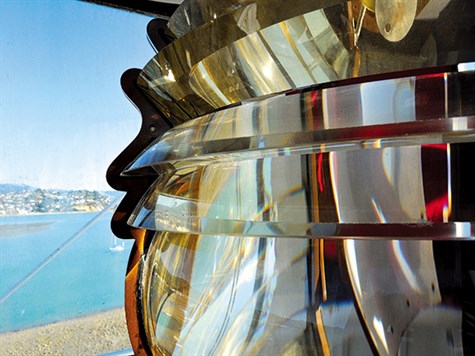
The view from the lighthouse
We climb dark stairs in tight circles until we emerge at the lighthouse top next to the complex and many-lensed light.
Mirrors, magnification, and magic meant a tiny oil flame could be seen at sea for 12 nautical miles. And on this clear day we see the snow-topped mountains behind Nelson, the city clambering up and over its hills, a great stretch of Tahunanui Beach and far into Tasman Bay.
I peep, with my telephoto lens, down at the six lonely baches on the Boulder Bank. Generous distances separate them, as if neighbours are respectfully avoided. I wonder who lives in them and why they chose this rocky edge to escape to when the Nelson area has oodles of pretty lakes and beautiful beaches.
Local knowledge
It takes three hours to walk along Boulder Bank to the lighthouse from the road end at Glenduan. And the same time to walk back, unless you've arranged for a boat to pick you up. Expect to see seals, dolphins, and lots of seabirds. Or you can take a boat.
Where to stay
For bush walks and birdsong, try Maitai Valley Motor Camp. This pretty motorcamp is on the edge of the Maitai River, five minutes' drive from Nelson, in a bush setting. Powered sites cost $14 per person.
Tahuna Beach Holiday Park is right next to the beach and walking distance to Nelson waterfront. It's a great place for children. Powered sites are $36 for two adults.
For the full article about Nelson's Boulder Bank, check out issue 121 of Motorhomes Caravans & Destinations. Subscribe here.

